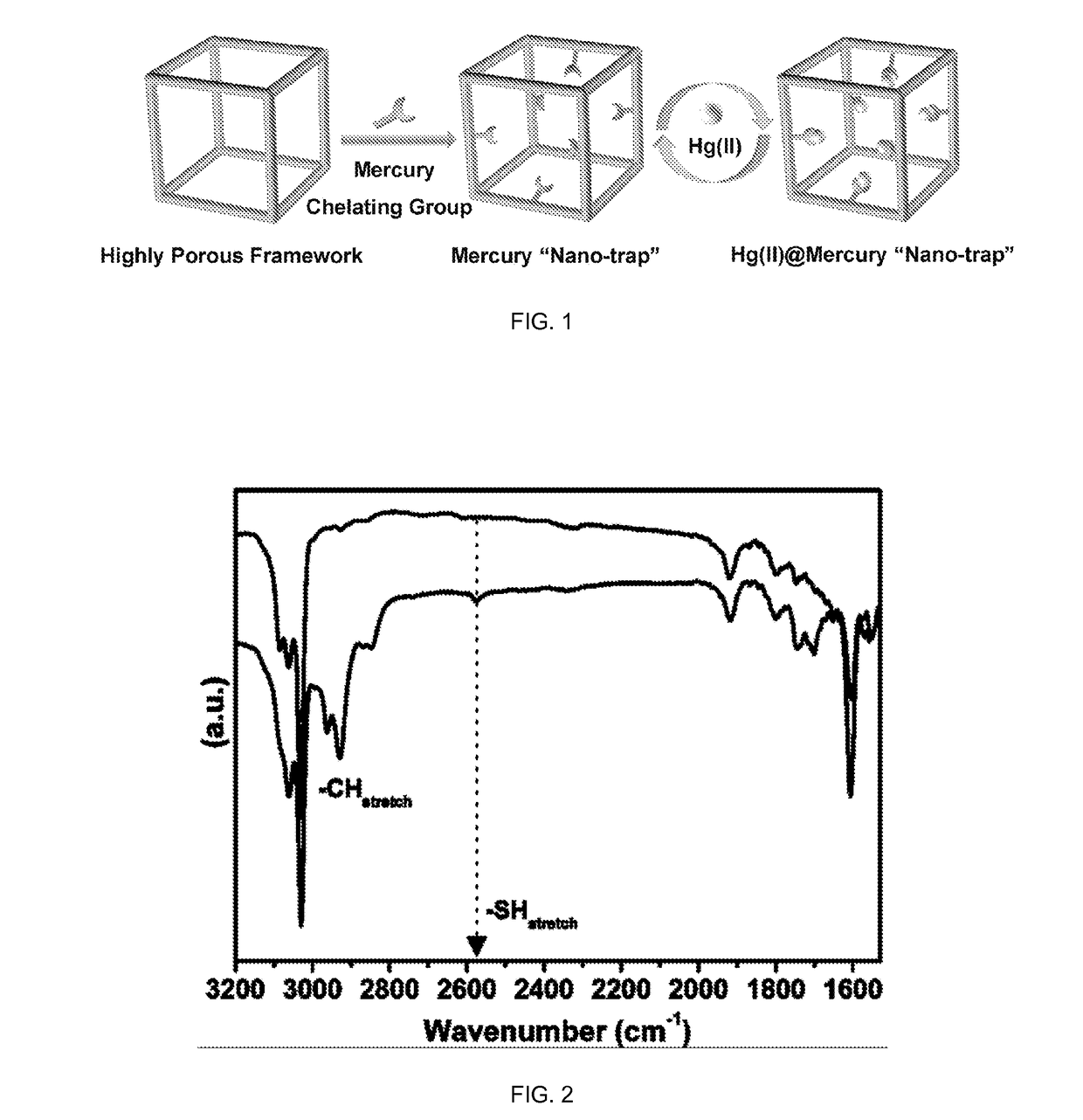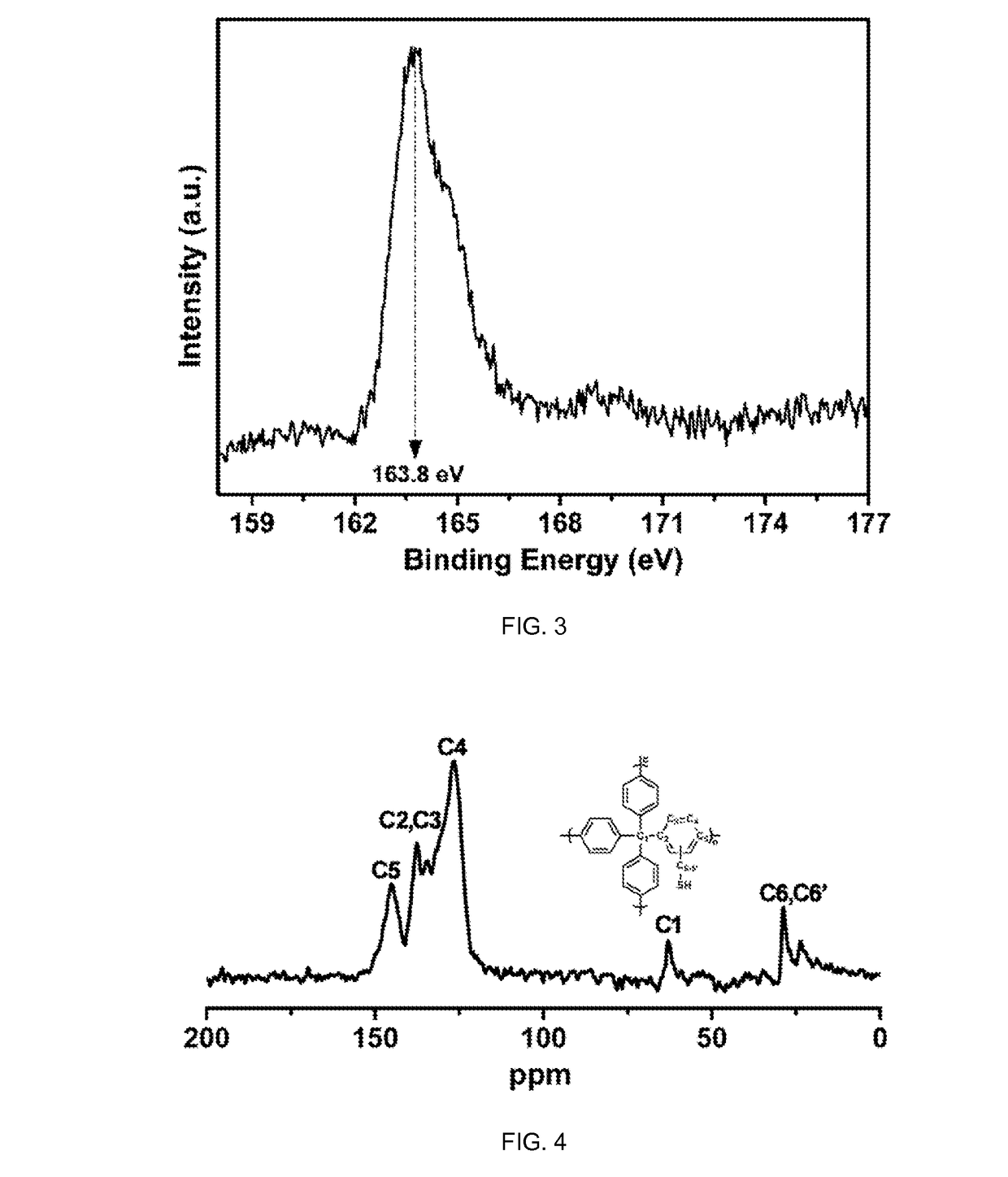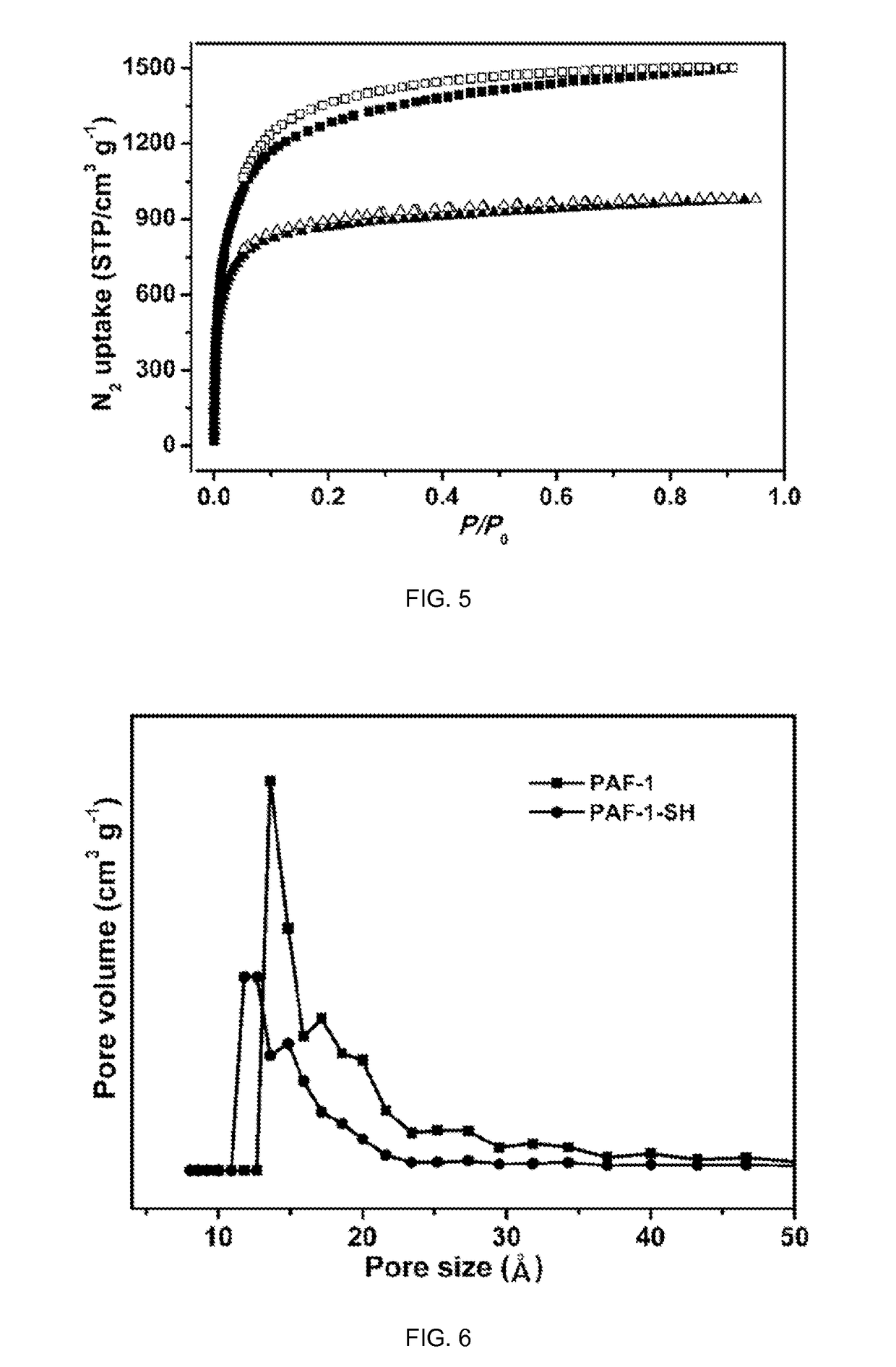Porous organic polymers for binding heavy metals
a technology of organic polymers and heavy metals, applied in the direction of other chemical processes, water/sludge/sewage treatment, chemistry apparatus and processes, etc., can solve the problems of high cost of existing technology for removing heavy metal contaminants, insufficient to meet stringent regulatory requirements for maximum tolerance levels, and harmful exposure to heavy metals
- Summary
- Abstract
- Description
- Claims
- Application Information
AI Technical Summary
Benefits of technology
Problems solved by technology
Method used
Image
Examples
example 1
Materials Preparation and Physicochemical Characterization
[0101]PAF-1 [(cross-linked poly-tetraphenylmethane) also known as (a.k.a.) PPN-6] is an amorphous POP possessing a hypothetical diamondoid-topology structure with very high surface area, and exceptional stability in water / moisture and acidic / basic media. PAF-1-SH can be readily achieved by chloromethylation of PAF-1 followed by the treatment with NaH following procedures reported herein.
[0102]Synthesis of tetrakis(4-bromophenyl)methane. To a three-necked round-bottom flask containing bromine (6.4 mL, 19.9 g), tetraphenylmethane (2.0 g, 6.24 mmol) was added step-wise with small portions under vigorous stirring at room temperature (25° C.). After the addition was completed, the resulting solution was stirred for 60 min and then cooled to 0° C. At 0° C. temperature, ethanol (25 mL) was added slowly and the reaction mixture was allowed to warm to room temperature overnight. Then, the precipitate was filtered off and washed subseq...
example 2
Mercury Binding Affinity and Selectivity
[0108]Hg(II) sorption kinetics. A 50 mL aqueous of Hg(NO3)2 (10 ppm, pH=6.8 NaH2PO4 / Na2HPO4 buffer) was added to a Erlenmeyer flask. Then 25.0 mg PAF-1-SH sample was added to form a slurry. The mixture was stirred at room temperature for 8 h. During the stirring period, the mixture was filtered at intervals through a 0.45 micron membrane filter for all samples, then the filtrates were analyzed using ICP-MS to determine the remaining Hg(II) content.
[0109]Hg(II) sorption isotherm. PAF-1-SH (10.0 mg) were added to each Erlenmeyer flask containing Hg(NO3)2 solution (50 mL) with different concentrations. The mixtures were stirred at room temperature for 12 h, and then were filtered separately through a 0.45 micron membrane filter, and the filtrates were analyzed by using ICP-MS to determine the remaining Hg(II) content.
[0110]Ion selectivity tests. 50.0 mg PAF-1-SH sample was added into a Erlenmeyer flask containing a 50 mL aqueous solution of Hg(NO...
PUM
| Property | Measurement | Unit |
|---|---|---|
| Fraction | aaaaa | aaaaa |
| Fraction | aaaaa | aaaaa |
| Fraction | aaaaa | aaaaa |
Abstract
Description
Claims
Application Information
 Login to View More
Login to View More - R&D
- Intellectual Property
- Life Sciences
- Materials
- Tech Scout
- Unparalleled Data Quality
- Higher Quality Content
- 60% Fewer Hallucinations
Browse by: Latest US Patents, China's latest patents, Technical Efficacy Thesaurus, Application Domain, Technology Topic, Popular Technical Reports.
© 2025 PatSnap. All rights reserved.Legal|Privacy policy|Modern Slavery Act Transparency Statement|Sitemap|About US| Contact US: help@patsnap.com



